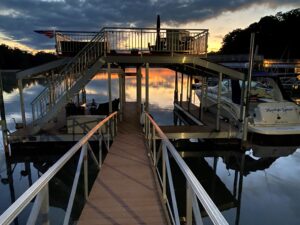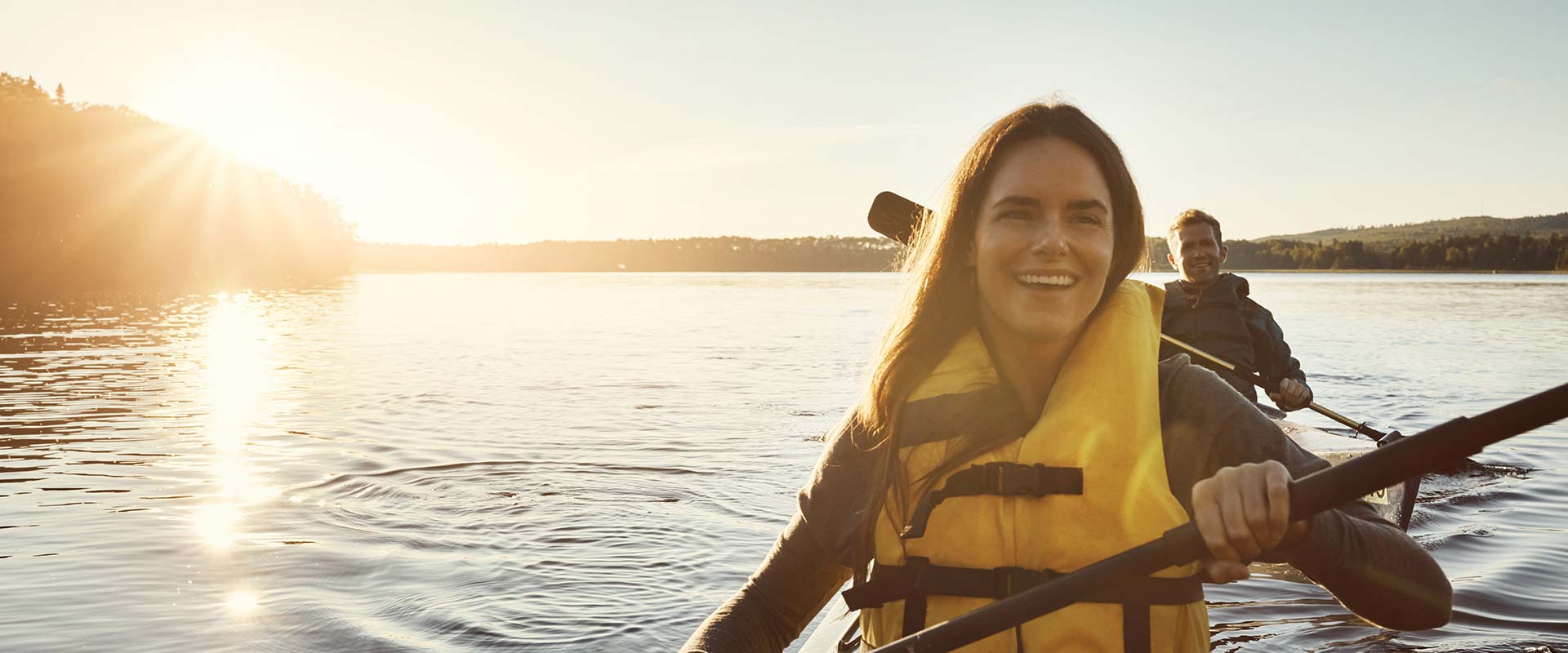Spring Dock Maintenance:
Tips and Tricks from the Pros!
LLA Board Member, Terry Morrisey, with Southeastern Dock Supply, shares tips and tricks for your spring dock maintenance!
Published Spring 2024

With the weather turning warmer now, lake homeowners are turning their thoughts to being on the water and enjoying their dock during the summer days and evenings. Docks, like anything out in the elements 24 / 7, need periodic maintenance to keep things safe, aesthetically pleasing and operating efficiently.
Winches and Cables:
An annual inspection of your winches and associated cable is suggested. A periodic spray of lubricant such as WD-40, or white Lithium grease is recommended. Spray the winch moving components / gears and the spool of cable itself to help assist in cable release and tightening. Be sure to place a barrier such as cardboard behind your spray direction to keep the lubricant from entering the lake water. If your cable shows signs of fraying and wear, it can easily be replaced by a dock repair crew or a DIY project. Rule of Thumb: If the cable will come in contact with the water, Stainless Steel cable is highly recommended…if the cable will remain 100% out of the lake water, Galvanized cable will suffice. Most 1 and 2 slip residential docks will use 1/4″ and 5/16” cable. A visual inspection and tightening of all cable clamps both on the dock and where the cable is secured on land, is recommended.
Flotation:
Checking the fasteners attaching the floats to the dock is recommended annually as well. If your flotation is secured by bolts or “J” hooks through a designed mounting hole in the float, it is meant to be secured in place by a large washer and nut on the underside. A nylon insert nut is perfect for this application. The nylon nut requires a socket / wrench for installation, however the upside is this nut, when installed properly, is very difficult, if not impossible, to wiggle loose under wave and dock movement, securing your float in place. If your floats have a lag drilled directly into the float surface, make certain they are tightened and secured with at least 4 lags per float minimum and check them regularly.
The USACOE requires that all dock flotation have a minimum of 9″ of freeboard visible. This means that the distance from the water level to the top of the float be 9″ or greater.
If your exposed float(s) measure less than 9″:
- They likely have water inside and need replacement,
- Are underfloated for the weight above and require additional flotation added.
- A combination of A and B.
Ramp Wheel Kits:
Generally wheel kits do not require lubrication, but do perform a visual inspection to ensure the cotter pin(s) is in good condition, washers are intact and caps, if present, are properly in place. Note on wheel kits: If your dock is secured by anchor poles, you would only need a set of non-retractable ramp wheels. If your dock is secured by cables and winches, a retractable set of wheels is needed, lowered down to move the dock and retracted up when not moving the dock. You may of course use retractable wheels with either option if you prefer.
Pressure Treated and Composite Decking:
Now is a good time to replace any defective boards and give the walking surface a good spring cleaning. Sometimes, for those on a budget, existing wood boards can be “Flipped” and reinstalled if they are safe and structurally sound. If the boards are beyond repair, new pressure treated lumber will be required to repair the deck. Composite boards are becoming quite the rave for docks due to their low maintenance advantages. While a bit more expensive than pressure treated wood, their beauty lasts for years. A light spray on the deck boards with an environmental safe cleaner followed by a pressure washing will have the dock looking clean and ready for the year.
Paint:
Any exposed or rusted areas would need to be sanded or wire brushed, primed and brush painted. IMPORTANT NOTE: Spray paint on or around any boat dock is strictly PROHIBITED!
Edging & Bumper:
Both vertical dock bumpers and horizontal dock edging become weathered in the elements. These will clean up with a bleach and water mixture to remove mold, mildew, etc. Allow it to soak in and rub with a clean shop towel or rag. If the edging / bumper is beyond repair, replacements and hardware can be purchased at a very reasonable price locally.
If your Boat Dock requires more attention, there are several dock builders, marine contractors and supply companies available on Lake Lanier ready to provide you a quote and / or the necessary materials and instruction for the DIY enthusiast. If you’re interested in getting a professionals help, LLA recommends working with one of Our Business Sponsors. With the partnership of our business sponsors and community partners the Lake Lanier Association is able to make a greater impact. Consider supporting these businesses which work with LLA towards a Clean, Full and Safe Lake Lanier.
Have a fun, happy and safe Summer on Lake Sidney Lanier!
Looking for more information and tips for dock maintenance? Check out this Dock Maintenance Webinar produced by LLA in 2021.

